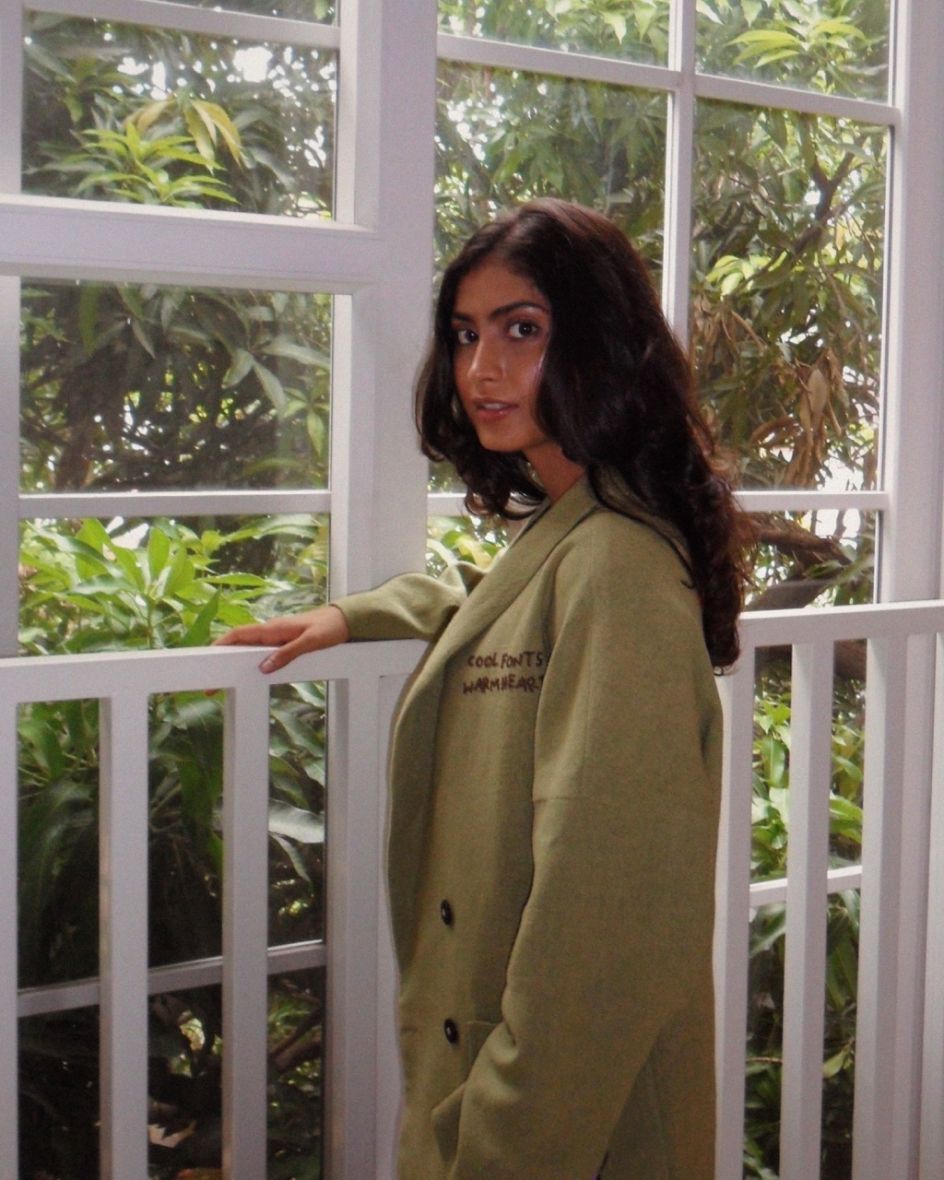For Siya Golecha, design was never a straight line. Before founding Siyart, the independent design studio she now runs between India and London, her path wound through fine art, mixed media, and printmaking. It was only during a foundation year at Central Saint Martins that she started to consider graphic design as a serious pursuit.
“One of my tutors, whose opinion I strongly valued, encouraged me to think seriously about graphic design as I had a good balance of artistic skills and business understanding, and kept up with global trends,” Siya recalls. “This insight went on to completely shift my perspective on what I would do next.”
That next step was a BA in Graphic and Media Design at the London College of Communication, where she immersed herself in editorial design. Eight publications later, she had not only mastered the fundamentals but also developed a growing fascination with brand identity. “I loved building a brand identity from scratch, helping shape its voice, story and personality,” she says.
Then, the leap into independence came quickly, with her first project coming through an Instagram DM. Siya explains: “Working on that project end-to-end made me realise this is what I wanted all along – to build a practice from the ground up that enabled me to explore myself and my interests.”


Two bases, two perspectives
Operating between India and London is not without its challenges, but for Siya, it’s a vital source of creative energy. “Having a practice in different geographies is not the easiest to balance logistically, but it’s something I really enjoy and benefit from,” she says.
In India, she is surrounded by traditions, colours and crafts that naturally influence her work. London, by contrast, offers exposure to global design culture, mentors, and cutting-edge studios. Rather than treating them as separate worlds, she moves fluidly between both.
“Moving between places makes me adaptable, and opens the doors to travel, to attend events, and to collaborate with clients across different regions,” says Siya. “Rather than relying on a single environment, I get to absorb contexts from both, which keeps my practice evolving.”


Designing with storytelling, culture and empathy
Ask Siya what defines her design ethos, and three words recur: storytelling, culture, empathy. Each, she believes, is essential for work that resonates.
“For me, good stories deserve to be told in creative and engaging ways,” she says. “Storytelling is about owning your story and sharing it in a way that feels real, while culture adds depth and makes a design feel personal instead of generic. Empathy is what allows the work to connect emotionally, not just visually.”
In a climate where AI-generated visuals risk flooding the field with surface-level work, she sees these qualities as more important than ever. Siya adds, “I think with AI becoming more present, there is a real risk of losing your voice.
“Having a strong sense of your own story and culture gives you an upper hand, because it keeps the work human.”


Jaipur, reimagined
Of all her projects, one stands out above the rest. As part of an internship application, Siya was tasked with creating a brand identity for her hometown of Jaipur. Rather than approaching it like a conventional city brand, she drew from her own lived experience.
“The project was my submission to an internship application at Designwerk, London,” she explains. “Rather than beginning with the city as a whole, I decided to begin with my own experience. Jaipur is the city that shaped my childhood, and it felt important to design directly from my own perspective.”
The result was a warm, textured identity inspired by block prints, hand-painted signage, and the colours of home. Typography choices were particularly challenging, though.
Siya says: “I wanted something that carried a sense of tradition but still felt modern and unconventional, so balancing nostalgia with freshness became the defining task.
The outcome is both personal and universal, and it’s clearly a love letter to Jaipur that sidesteps clichés, while still respecting the city’s history. “The goal was to create something heartfelt that represented what Jaipur means to me personally, not just how it appears on the outside,” she adds. “It showed me how design can hold emotion and memory and not just look good.”


Empathy in practice
Empathy is sometimes one of those buzzwords that appear without substance, but when it comes to Siya, it’s clear just how much it influences her approach to listening and responding in every project. She explains: “With clients, I try to go beyond the brief and understand not only what they want to communicate through their brand, but also what this story or project means to them and how they want others to experience it.
“Personal projects, meanwhile, are rooted in her own memories and cultural context.”
Her reinterpretation of Lotería, the traditional Mexican card game, is a case in point. She studied its cultural symbolism and reimagined it in a way that felt both celebratory and rooted in tradition. In both Lotería and Jaipur, the aim was to create work that makes people feel “nostalgic, proud, or understood.”


Lessons in independence
Running Siyart has brought its fair share of lessons and surprises. “One of the most important lessons that working independently has taught me is that design is bigger than the creative aspect – it’s about people, their story and the collaborative process of bringing a vision to life,” says Siya.
She has also learned to embrace unpredictability. “Some of the most rewarding opportunities arrived in the most ordinary and mundane ways, like an unexpected DM in response to a post, or a passing conversation,” she adds. Siya also believes that patience and persistence often matter more than quick wins.

Looking ahead
Unsurprisingly, when asked what’s next, Siya is keen to take on more projects that combine culture, storytelling and identity. “Working with lifestyle, fashion and food brands particularly interests me, as they often carry strong narratives ripe for innovative portrayal,” she says. She’s equally excited about experimental work that crosses disciplines and challenges conventions.
Ultimately, Siyart remains a vessel for her curiosity and a platform for stories she believes deserve a voice. “Over the long term, my goal is to find stories I believe the world can benefit from, and build identities around them that feel authentic, emotional and durable.”














